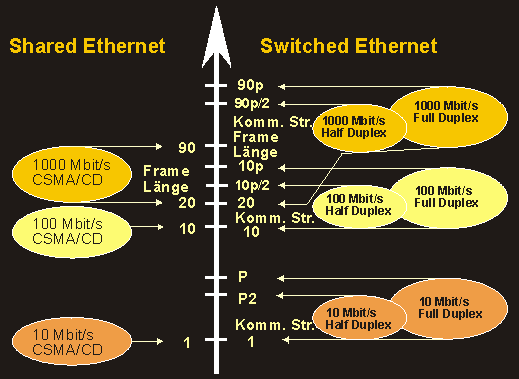performance
Performance is synonymous with capability. It can be specified for entire transmission systems or for individual transmission components, for computer systems or individual peripherals, or even for modules and chips.
Performance can be measured and compared. The evaluation of performance depends on the system or individual component being evaluated. For example, a router is subject to different criteria in its performance evaluation than an entire transmission system, and a display is subject to different criteria than a complete data processing system.
- In communications technology, performance refers to all factors that have a direct influence on transmission quality and quality of service, such as transmission speed, real-time behavior, availability, data throughput or other transmission-related parameters such as delay time, jitter, data packet losses and some other performance parameters.
- In the case of Ethernet, for example, performance is limited by the stochastic access methodCSMA/ CD, in which all stations connected to the Ethernet have equal rights. With this method, the probability of collisions increases with the number of connected stations, the frame length, and the length of the LAN segment. As the number of stations increases, efficiency decreases, as does shorter frame length, since the ratio of payload to frame length decreases with smaller frame size. With switched Ethernet, the performance increases by quite a bit compared with shared Ethernet. If the performance of classic Ethernet (10Base..) is set to 1, then the shared variants of Fast Ethernet are ten times and Gigabit Ethernet twenty to ninety times the value, depending on the frame length. The switched variants, on the other hand, achieve these values on a per- port basis.
- In computer technology, performance is the qualitative evaluation of the computing power of a processor. It is defined as the reciprocal of the time that a processor needs to execute a task. There are benchmarks for evaluating the performance of a processor. The benchmarks used for CPUs are published by the Standard Performance Evaluation Corporation( SPEC). The well-known CPU2006 benchmark determines the performance between the central processing unit and the memory. Real applications with fixed-point calculations and floating-point numbers are run for this.

